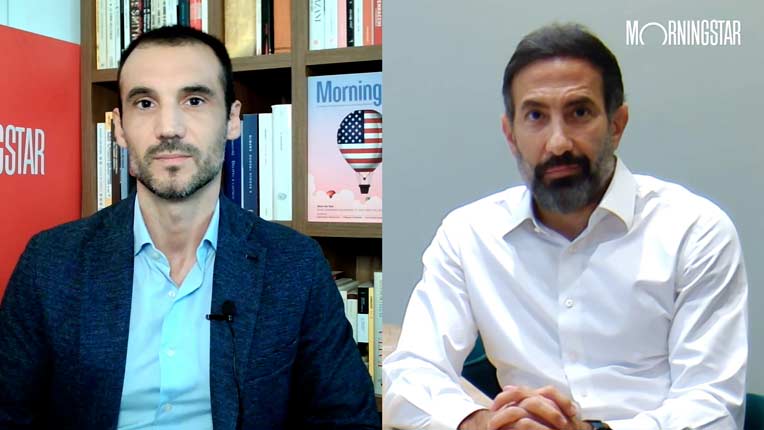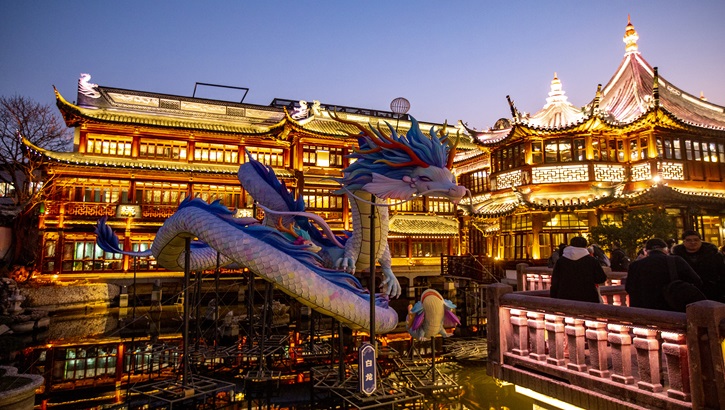Valerio Baselli: Hello, and welcome to Morningstar. This week, we are all about emerging markets. That's why I'm joined today by veteran fund manager, Michael Bourke. He is Head of Emerging Markets Equities at M&G Investments.
So, Michael, emerging stocks as a whole have been lacking developed equities for quite some time now. And global investors have pulled out of USD 14 billion from emerging markets equity funds over the last year. Do you see a possible turnaround in the short term?
Michael Bourke: Good morning, Valerio, and good morning, everyone. Yes. So, when you look at the asset class over the last not just one year, but a few years, it's been hurt by a couple of factors, namely China and U.S. rates. Chinese economic slowdown has, of course, fed directly into a contraction in earnings, which has hurt equities very much, leading to a 50%, roughly, reduction in returns from Chinese equities. At the same time, of course, we're seeing U.S. rates at a very, very elevated level compared to certainly the previous years, where we had very low rates. Historically, U.S. rates have been associated with pressure in emerging markets in different areas, right, because it raises the cost of borrowing for many vulnerable emerging markets.
At the moment, we're seeing a couple of improvements in both of those factors. So of course, Chinese economic slowdown as a number of years, we've moved on a little bit. There has been some stimulus entering the system. The central bank of China has been reducing rates. So, we are seeing that there are some modest improvements in China, particularly when we look at the individual corporates. So, we're more optimistic in China than we've been for a number of years, particularly when you look at the equity valuations. At the same time, of course, we're a week away from the Federal Reserve in the U.S. cutting rates. And so, they are expected to cut rates, which will take the pressure off emerging markets at the margins. Earnings are expected this year to go up roughly 20% and sooner mid-teens next year. And really, the asset class has not yet reacted to that more positive earnings picture. So broadly, we're looking at a much more constructive outlook for emerging market equities.
Baselli: Right. And of course, this asset class is very heterogeneous, and we should just look at the performance of the two developing giants, China and India. In 2024, so far, the Chinese stock market is down 11%. Meanwhile, India is up 22%. So, should we get used to the fact that India is the new driving force of emerging markets?
Bourke: So, Valerio, I'd make two brief points, if I may. I guess, first and foremost, that heterogeneity you're referred to is the asset class's greatest strength. It does help investors avoid trouble spots and avoid markets that are difficult, of course. And then the active fund managers are able to navigate that very well. We say the index today is heavily concentrated, right? When you look at China, India, Taiwan and Korea, that's roughly 75% of the index. So, it's not a very balanced offering in terms our benchmark today and active management to navigate around that.
Clearly, India is an economy that's doing incredibly well. And then one expects it to carry on doing so. There have been a number of reforms under the Prime Minister and the BJP party, which have fed into this more productive, more dynamic economy that we're seeing in the last number of years. India has become a lot more resilient as a result. And of course, with a very young population, one should expect that growth certainly in comparison to China to grow faster for a number of years, if not decades to come. But one should remember that we're investors, right? We're not economists. And so, at the end of the day, what matters to us are of course the returns that come with that growth. And that's where we're a little more cautious in the sense that Chinese equities are very, very cheap, whereas Indian equities are much more expensive in comparison.
Baselli: All right. And I mean, given that specifically on the Indian stock market, of course, as you said, its value has been very strong over the last 18 months. Do you foresee a maybe physiological correction ahead for Indian stocks? And in general, what is your outlook?
Bourke: I guess no manager would ever forecast a correction, right? So, I think when you look at the value, it's put it in context when Indian multiples have risen a lot over recent years. If you go back to kind of pre-COVID time, Indian earnings multiples were roughly mid-teens, mid to high-teens. Today, and certainly since COVID, they've been mid to high-20s. So, take the 10-year average of price to earnings in India roughly 20 times. Today we're at 28 times earnings. So clearly, that's quite an elevated level of expectation built into earnings multiples.
Of course, earnings growth has been very good. One should hope so as an investor, given how much one is paying to enter that market. We're concentrated on the risk premium associated with that. There's not much room for accidents in India, right? At this kind of level of earnings and valuation, one has to be careful, because if there is any slowdown or any even modest correction in those earnings, that's going to be punished by the market because the market expectations are so elevated. So, we'd just be a little bit guarded. Currently, the long-term outlook is still quite rosy for India, but near term just a little bit cautious.
Baselli: That's very interesting. Finally, I mean, what are the most interesting sectors or companies in India today? And you already answered partially, but where do you see the best opportunities and the main risks?
Bourke: Sure. So, when you look at India, what's fascinating in the last 12 months to two years has been the emergence of the domestic investor as a real key player in the equity market locally. We're seeing that come through mutual fund inflows locally in India. The start of this year has been almost $7 billion a month. This is a very, very elevated levels of inflows, whereas foreigners on average have been net sellers, right? So, there's an interesting dynamic at play here. You also see that in the level of valuation. So mid-caps in India are at much higher levels of valuation than some of the large caps in the index, which is an unusual characteristic, right? So, where we do see valuation opportunities is regard to some of the banks, for example. In a way, some of the banks have been a little bit of a victim of the equity market rally because roughly 10% of financial savings in India have come out of bank deposits and gone into the stock market.
So of course, that has hurt the deposit gathering ability of the banks and the cost of those deposits, which in itself has fed through to a slowdown on lending growth. So of course, it's something the policymakers, central bank and the banks are very aware of because in a way that could in itself hurt the economy as banks slow down lending growth to match that more restricted deposit growth. So, we do see opportunities here that actually some of the banks have been left behind in this rally and they look like areas of opportunity for us.
Baselli: Well, thank you so much, Michael, for your time. For Morningstar, I'm Valerio Baselli. Thanks for watching.





























